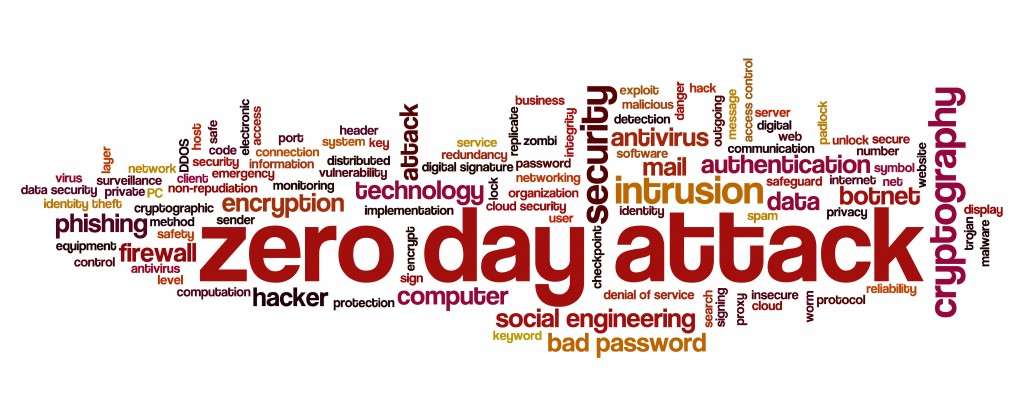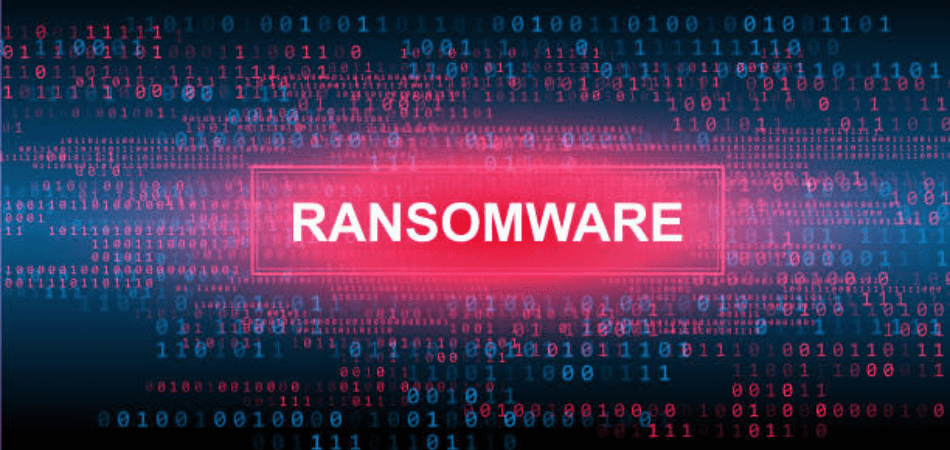Enterprise operations have evolved significantly in the last decade, and there is huge reliability in technologies. It is specific that in 2023, these technological advancements will take a leap, and there will be more reliability on artificial intelligence, cloud computing, machine learning, virtual reality, and various such improvements.
Enterprises depending on different cyber or internet-related technologies are bound to face cybersecurity threats. You must know about these cybersecurity threats and their consequences in 2023 to help the enterprise sustain itself in this competitive world.

What are Cybersecurity Threats?
A cybersecurity threat commonly refers to any possible attack on your data and system where you have stored all the essential information about the enterprise or at the individual level. It is an attack that takes your data unlawfully and tries to control or disrupt the operations of your system.
Cybersecurity threats may originate from various sectors like individual hackers, corporate spies, terrorist groups, state or non-state actors, and other stakeholders. There are numerous cyber attacks that we have seen recently. For instance, Marriott had a data breach of its consumers’ personal, passport, and payment card details. This is a huge problem for the enterprise and consumers; 2023 will not be an exceptional year. Therefore, knowing about these cybersecurity threats for enterprises and how to prevent them is important.

Why Should Enterprise Concern About Cybersecurity Threats?
Cybersecurity concerns all sectors, individuals, organizations or governments, but enterprises should be more careful about it for many reasons. Enterprises can affect their financial stability and disrupt operations if a cyber threat hits them. For instance, if an organization delivers food, they might have their consumers’ data, address details, food choice, phone number, and many more details. If this data is stolen by a cyber attack and shipped to a competitor organization, it would be a commercial risk for the food company.
Additionally, it also affects the consumers’ right to privacy; therefore, it poses a considerable problem to the enterprise. Consequently, they must consider it seriously and appoint a cybersecurity agent to manage critical sensitive data. Now, the question arises: What enterprise cybersecurity threats may an organization face? So, let’s delve into the intricacies and discover the top 5 cybersecurity threats.
Top 5 Enterprise Cybersecurity Threats in 2023

Every year, as there is new technological advancement, a new cyber threat prevails in the cyber world. New technologies come with new vulnerabilities, so let’s understand these threats and cybersecurity solutions to these problems.
Storage Reconnaissance
Enterprises increasingly use cloud storage to store important and sensitive data. The organization feels that only keeping it on the cloud can protect its data, but there is much more to do. Cloud storage also requires protection with proper encryption and password-backed security. If these steps are overtaken by only storing the data, hackers find it easy to access them. For instance, we have seen the example of a data leak by the National Security Agency, which was stored on the cloud, but effective measures were not taken.
Zero Day Attack
Zero Day Attack is a new type of cybersecurity threat prevailing in the cyber world. The threat says the software developer has zero days to solve it. It refers to software’s vulnerability before the developer knows about it, and the attacker uses it to capture all the critical data. It is one of the most dangerous cybersecurity threats that an enterprise might face.

Business Email Compromise
It is a process where the attacker first attacks the business system through phishing and hacks the business system to access the business and financial information. The attacker then creates an account with the organization’s name and deceives the employees to make payments in this new account. This creates a substantial financial risk for the organization, so a proper cybersecurity solution to this threat must exist.
Ransomware and Malware

Hackers have evolved their ransoming system and are using more sophisticated ways to hack organizations’ sensitive data. Once they install the malicious software, which is malware, in the organization’s system, they ask for a huge ransom from the company to retrieve their data. In this cybersecurity threat, the company is left with only two options, either pay ransom to retrieve the data or lose the data to the hackers. This is one of the greatest threats an organization may face.
Phishing and Smishing
Phishing and Smishing are among the greatest hacking procedures hackers follow to access an organization’s essential data. It steals sensitive data like credit card details, login credentials, etc. Smishing is similar to SMS and works the same way to steal data. However, enterprises are using sophisticated devices and software to safeguard themselves from this threat, and the hackers have moved one step ahead of them.
So, what is the solution to these problems? Let’s look at the possible cybersecurity solutions one can adopt to solve these cyber threats.
What are Effective Cybersecurity Solutions to Cyber Threats?
Best practices for enterprise cybersecurity in 2023
here are some best practices for enterprise cybersecurity in 2023:
Multi-factor authentication (MFA)
- According to Microsoft’s Security Intelligence Report, using MFA can block over 99.9% of account compromise attacks.
- The 2021 Verizon Data Breach Investigations Report found that MFA is effective in preventing 85% of targeted attacks.
Regular security assessments and audits
- A study by Ponemon Institute found that 67% of data breaches were due to vulnerabilities that could have been identified and patched during a security assessment.
- According to a survey by Accenture, 83% of organizations that conduct regular security assessments experienced fewer cyberattacks.
Employee training and awareness programs
- A report by IBM found that 95% of all cybersecurity breaches involve human error, such as clicking on a phishing link.
- The 2021 Cost of a Data Breach Report by IBM found that organizations with an extensive security training program had an average cost savings of $360,000 compared to those without.
Implementation of a robust incident response plan
- The Ponemon Institute’s 2021 Cost of Insider Threats report found that having an incident response plan in place can reduce the average cost of an insider-caused incident by $3 million.
- The 2021 SANS Incident Response Survey found that 91% of organizations that had an incident response plan in place were able to contain an incident within a day.
Use of advanced cybersecurity technologies
- The 2021 State of Security Operations report by Deloitte found that organizations that use automation and machine learning to detect and respond to threats had a 94% improvement in incident response times.
- According to a survey by Sophos, organizations that use endpoint detection and response (EDR) technology had a 45% reduction in the impact of a cyberattack.
Also check: Top cybersecurity statistics to know in 2023
Final Words
Enterprise cybersecurity is a huge concern, and security has increased with the development of advanced technologies. It is, therefore, important for organizations to look into their data security without compromising their daily functions. Therefore, enterprises can take the help of virtual CISO or advice that can help them secure data. advansappz provides one of the most effective IT security solutions to organizations you can undertake as an enterprise cybersecurity measure.
Frequently Asked Questions
As an AI language model, my responses are based on information available up until September 2021, and I do not have real-time data on specific events or trends. Therefore, I cannot provide an accurate and up-to-date answer on cybersecurity threat trends in 2023. Cybersecurity threats are constantly evolving, and new trends emerge each year. It is essential to consult reliable sources and stay updated on the latest developments in the cybersecurity landscape to understand the specific threat trends in 2023.
-
Cyberattacks:
The threat of cyberattacks continues to grow, with hackers targeting businesses, governments, and individuals. Leaders should focus on enhancing cybersecurity measures, including robust network protection, employee training, and proactive threat detection and response. -
Ransomware:
Ransomware attacks have become increasingly prevalent, causing significant disruptions and financial losses. Leaders need to implement strong backup systems, regularly update software and security patches, and educate employees about the risks of phishing and social engineering. -
Data Breaches:
As organizations collect and store vast amounts of sensitive data, the risk of data breaches remains high. Leaders must prioritize data protection by implementing encryption, access controls, and data breach response plans to mitigate the potential damage. -
Internet of Things (IoT) Vulnerabilities:
The proliferation of IoT devices poses new security challenges. Leaders should ensure that proper security measures, such as strong authentication, encryption, and regular firmware updates, are in place to safeguard against IoT-related vulnerabilities. -
Insider Threats:
Insider threats, whether intentional or unintentional, can compromise an organization’s security. Leaders should implement strict access controls, monitor employee activities, and provide comprehensive training to raise awareness about the potential risks associated with insider threats.
-
Zero Trust Architecture:
Zero Trust Architecture is gaining significant traction in the cybersecurity landscape. It emphasizes strict identity verification and access controls, treating every user, device, and network as potentially untrusted. This approach helps prevent unauthorized access and reduces the impact of potential breaches. -
Artificial Intelligence (AI) in Security:
AI is revolutionizing the field of computer security. It is being used to detect and respond to advanced threats, analyze vast amounts of data for anomalies, and automate security processes. AI-powered solutions enhance threat detection and response capabilities, improving overall cybersecurity posture. -
Increased Focus on IoT Security:
With the rapid proliferation of Internet of Things (IoT) devices, there is an increased focus on securing these interconnected devices. IoT security addresses vulnerabilities in smart homes, industrial systems, healthcare devices, and more. Ensuring robust security measures for IoT devices is crucial to prevent data breaches, unauthorized access, and potential disruptions to critical infrastructure.
An insider threat cyber awareness in 2023 refers to the understanding and recognition of the risks posed by individuals within an organization who have authorized access to sensitive information and systems, but may intentionally or unintentionally misuse or compromise them for personal gain or malicious intent. It involves educating employees about potential insider threats, such as phishing attacks, social engineering, data theft, and unauthorized access, and promoting a culture of cybersecurity awareness and vigilance within the organization to mitigate such risks.
As an AI language model, my responses are based on the information available up until September 2021, and I do not have access to real-time data. Therefore, I cannot provide information on the largest data breach of 2023. It’s recommended to refer to reliable news sources or cybersecurity reports for the most up-to-date information on significant data breaches.













